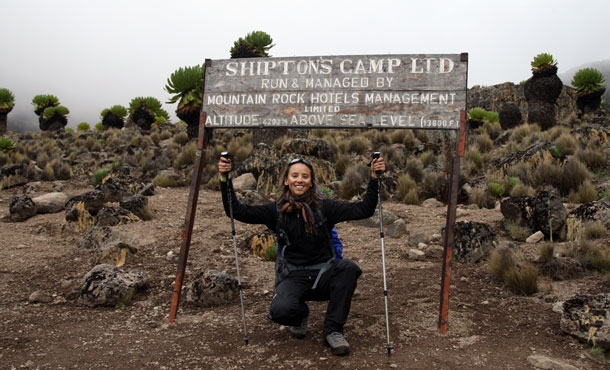Ultratravel - We’re all explorers now
Spring 2011
A week under a palm tree doing nothing? Very last century – unless you’re recovering from a trip down the Congo or a trek across the Sahara. In a world where the extreme has become the ordinary, Michelle Jana Chan attempts three famous peaks in Tanzania, Kenya and the Alps.
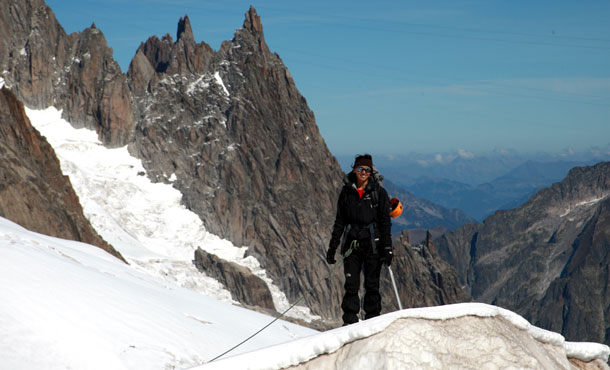
"Prepare yourself," my guide, Ric Potter, had warned. "There will be two 'false dawns' before you see the real summit of Mont Blanc." There had already been some misleading mountain forms suggesting the summit. After six hours traversing ice fields and skirting crevasses, I knew it couldn't be far. My doubts were not about the distance but my own stamina. I heard myself mutter under my breath: "I am at my limit now". Not that Ric could hear. He was about 50ft ahead of me at the other end of the rope that connected us. Over the next half-hour, I repeatedly thought: shout, get his attention, tell him you're done. But I felt too exhausted to draw enough breath together to call out. It was easier to push on.
Or maybe, just maybe, it was because I was not ready to give up.
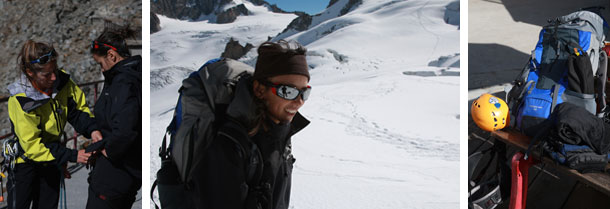
My body had wanted to halt and head back for hours. I could barely feel my feet, rubbed raw from the rigid rented boots. In retrospect, I wish I'd bought my own, even at £300 a pair. When an ice bridge collapsed from under me and I fell into a crevasse – dangling mid-air by my rope – the overwhelming emotion was relief at having the weight off my feet. Truly, my body did not want to take another step. Fortunately, my mind had taken over long ago.
I focused my concentration back on the banal task of planting one foot in front of the other while avoiding catching the edges of my crampons. I tried to mirror Ric's pace so the rope did not become too taut or too slack. I stared at my boots and studied my stride.
With my eyes cast down, the summit came up suddenly: a brow of hill with nothing above or beyond it. Mont Blanc is significantly higher than any other peak in the Alps – 4,810m – and it feels as if the world falls away in every direction. With Italy sweeping down to my right and France to my left, I secured the mandatory summit photograph and then sat down on the snow. For one still moment I gazed about me at the ethereal view, before turning to head back down.

Everyone knows the ascent is the easier half of the journey. On the way down, of course, there is no longer the pull of the peak. The shot of adrenalin from reaching the summit quickly wears off. The body is shattered, the mind drained. I remember fantasising – almost hallucinating – about a knight in a shiny helicopter.
In both directions, we used the Cosmiques route that passes through dramatic Alpine terrain made up of glaciers, faces and ridges. It is less popular than the classic Goûter route because climbers must also counter the peaks of Mont Blanc du Tacul and Mont Maudit before reaching Mont Blanc. On the ascent, that offers a welcome mix of ups and downs – but on the return, the uphills are harrowing.
My pace slowed. My breathing quickened. I began to take more breaks, feigning thirst or the need to take off a layer. The truth was, I had nothing left in the tank.
It can be a tortured time in the mountains. I remember whispering all sorts of vows, including "Even if somebody gives me the money, I will not climb Everest". When we finally arrived back at Cosmiques, my symptoms read from a textbook. I did not want to eat or drink, and I lay down but could not sleep. After I pulled off my ice boots, I wished they were back on; they had seemed to hold everything together. I could not bear to peel off my bloodied socks. I sipped a cup of tea and let my fork play with some hot food. Without question, I had asked too much of myself.
Or is that the point? We ask too much of ourselves to feel more alive.
After the trip, my feet were so damaged I could wear only flip-flops. I slept 10 hours a night and drank milkshakes to try to regain the half-stone I had lost in 48 hours. Friends asked how I had fared. Any remnant of pain had already morphed into triumph. Very soon I was dreaming up a plan to climb Aconcagua, South America's highest peak.
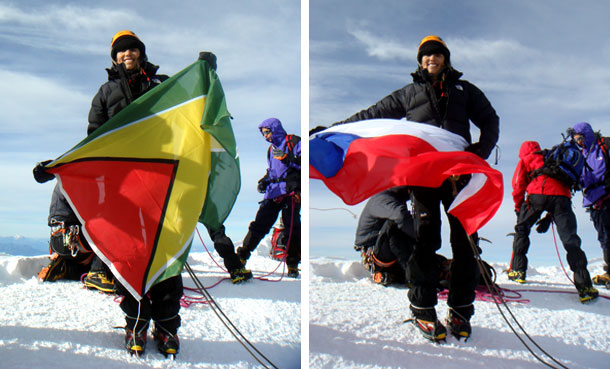
Extreme adventure is no longer just for bearded, frostbitten explorers. Climbing the world's highest mountains is increasingly seen as possible during a holiday, or even on a long weekend. "Sixty per cent of my inquiries are now for Mont Blanc," Ric Potter says. "There has been a huge growth in people wanting to do the really big peaks." Nowadays, more than 20,000 head up Mont Blanc each year, ranging from novices to record-breakers. That volume of climbers and range of experience has made it the most lethal mountain in the world, claiming more lives than any other.
Is the element of risk part of the allure? Not according to Matthew Robertson, founder of Momentum Adventure, whose trips include off-piste skiing in Kashmir and canoeing in the Yukon. "People don't want to leave their comfort zone," he says. "I've only ever had a couple of calls about summitting Everest. There is a very good chance you could die up a mountain like that. This is not about endangering your life."
Yet Momentum's trip portfolio demonstrates just how much we want to push our limits and stretch our imaginations. On one expedition, the company flies guests to a drop-zone within 70 miles of the South Pole. For the last stretch, participants are guided overland, pulling toboggans behind them. It is a seven-day trip costing £60,000 to £80,000. "That is a hell of a box to tick," Robertson says. "You get the money shot at the South Pole and, if you want dinner-table banter, you can talk about that one for years."
Ambitious trips like this have opened up to a larger market some of the world's most inaccessible destinations. Even Mount Everest is seen as achievable these days. Of course, climbers must be physically fit and mentally tough, but expeditions up the world's highest mountain are better supported than they have ever been. Successful ascents have now passed the 5,000 mark.
The drive towards extreme adventure is not that difficult to explain. Access is improving to many remote areas, there has been a revolution in the quality of equipment, and personal trainers can tailor fitness programmes to a specific goal. The motivations may be harder to nail. Some people may be looking for bragging rights or fulfilling long-held dreams, but many are simply searching for a more immersive holiday.
Jonny Bealby, founder of Wild Frontiers, believes his clients increasingly want to see the world first-hand and not be dictated to by politicians or the media. "Pakistan, for example, has done really well this year," he says, "especially among young women who might not feel comfortable travelling alone but who really want to understand the place."
Bealby also runs trips to the Hindu Kush, K2 Base Camp and the Sahara, and business has thrived since he started the company eight years ago. "Every year, people want to go more extreme," he says. "These are not the sort to sit in a Jeep and trundle through a country. They want to get involved. Take our July trip to Afghanistan's Wakhan Corridor. It's as hardcore as commercial adventure gets – and nearly full!"
On Chloë Chick's "3 Peaks 3 Weeks Challenge" trips, all-female groups climb Mount Kenya, Mount Meru and Kilimanjaro while raising money for East African charities. It is a winning combination. Chick says she has been overwhelmed by the feedback and recently gave up her telecoms job to take on the project full-time. She is now expanding to include single-peak climbs in Tajikistan and the Congo. "There are so many women in boring careers and boring relationships who believe there has to be more to life," she says.
Kilimanjaro is receiving more tourists than ever before. Around 35,000 visit each year – a number that has trebled in the past 20 years. Rupert Finch Hatton of Hoopoe Safaris, which also offers classic Kenyan trips to the Serengeti and the Masai Mara, says the adventure arm of his company is booming. "Our Kilimanjaro luxury climb is the only thing that has consistently grown," he says. "The recession saw everything go down except mountaineering."
The high-end nature of Hoopoe's trips up Kilimanjaro – which promise expansive tents, hearty meals and an army of porters – has also broadened the appeal. "We had a group of mothers sign up, telling us they are wearing their hiking boots to Tesco and to do the school run," Finch Hatton says.
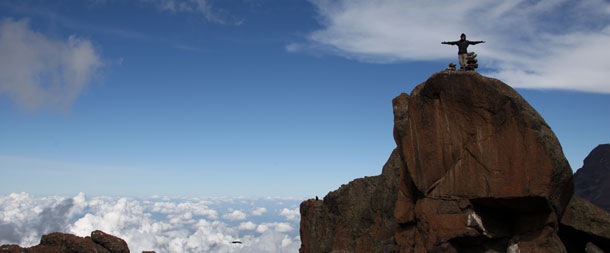
Last year, I too set my sights on Africa's highest mountain. Although it is nearly 6,000m above sea level, Kilimanjaro is not a complicated technical climb. Good fitness and a stubborn streak are often enough to make it to the top. The altitude is the biggest obstacle. I can remember the last hour, plodding through the snow and panting with the effort, my mind muddled by the thinning air and physical exertion, yet at the same time sharply focused on the target.
As the highest free-standing mountain in the world, at 5,895m, Kilimanjaro is blessed with a spectacular summit. The cloud base is so far below that the view resembles that from a plane window. I could see the distant, seemingly tiny cone of Mount Meru, in Tanzania.
There were the crowds, as I had been warned. About a hundred fellow trekkers were at the top, some crying, some smacking high-fives, some looking decidedly green. There are those who believe the crush detracts from the experience, but I revelled in the camaraderie.
The high footfall around the world's most famous peaks does raise important issues about the impact on the environment and local communities. Robin Boustead is the founder of the newly launched Great Himalaya Trail, the highest and longest mountain-trekking route in the world, which he hopes will distribute tourists more evenly around the region.

"There are 5,000 trekkers a month in the Annapurna area and double that number around Everest," he says. "If we could attract some of them to Nepal's more remote sites, it could benefit hundreds of thousands of locals living there." Some of the first organised treks on the Great Himalaya Trail – whose routes wind across Bhutan, China, India, Nepal and Pakistan – are being led by mountaineers such as Stephen Venables, the first Briton to climb Everest without oxygen, and Greg Mortimer, the first Australian up Everest. It is not uncommon for professionals to work as tour leaders, yet they often have mixed feelings about the way the sport has developed.
"When I started climbing, Everest was for people at the pinnacle of the sport," Ric Potter says, "and now it is accessible to anyone who has the money to go. I suppose there are two sides to it. It is obviously elitist to say people cannot go, but there are problems associated with a lot of inexperienced people on a high mountain." There are worries that under-prepared tourists taking on the big mountains are putting at risk the lives of rescuers and guides, as well as their own. But Boustead acknowledges the allure of the world's highest peaks. "I would not like to be in a queue to get to the top of Everest," he says, "but it is still a unique experience. Nobody ever regrets doing it. Overall it is good for people to explore the world. That way they will want to fight for the future of this planet."
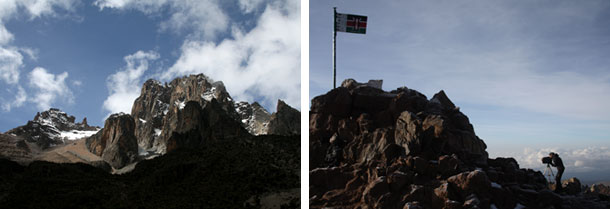
Of the three peaks I climbed, Mount Kenya was the one I loved the most. At 5,199m (some 700m lower than Kilimanjaro), it is often relegated to the role of an acclimatiser for Africa's highest mountain. Yet the landscape is much more luxuriant, with clusters of head-height giant lobelia, bamboo and glades of rosewood. In the daytime there was the mewing of the friendly, guinea-pig-like rock hyrax, which bounded about the tussock grassland. I still remember cupping my hands above a field mouse which paused at my feet during a rainstorm, seemingly looking for shelter.
When we reached the empty summit of Mount Kenya, our group dispersed. I found a lonely rock and looked around me at the drifting clouds and the wonder that is East Africa. Recalling that moment, and dismissing the muttered vows I surely cannot have meant, I have to admit that I would, of course, love to go up Everest.
